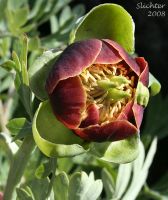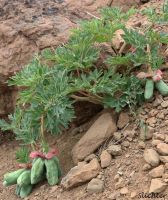
Annual Meeting
2018

 |
NPSO Annual Meeting 2018 |
 |
Sponsored by Portland and High Desert Chapters
|
The Portland and High Desert Chapters are pleased to be hosting the 2018 annual meeting of the Native Plant Society of Oregon in Prineville, Oregon. Our 2018 Annual Meeting botanical landscape will be the Ochoco Mountains, home to giant trees, rare red-band trout, sparkling streams, and one of the best wildflower areas in central Oregon. It is a diverse landscape, with thick stands of California white fir and western larch on north-facing slopes, ponderosa pine forests on south-facing slopes, sagebrush flats on the dry uplands and Big Summit Prairie, a large high meadow well known for wildflowers and butterflies. Terry Holtzapple will be our keynote speaker on Saturday evening; her topic is "The Ochoco Mountains, a Cultural Landscape". Terry is a retired archeologist. She has worked on the Ochoco National Forest, the Crooked River National Grassland, and BLM Prineville District, and with four neighboring Native American tribes. Documentation of archeological records has helped to create management plans favoring traditional cultural plants. She is respected by tribal elders, ethnobotanists and rock hounds alike as a local expert on "all things Ochoco". Sarah Cuddy from Friends of the Ochocos and Oregon Wild will present an overview on the Ochoco Mountains on Friday evening. We chose Brown’s peony (Paeonia brownii) as our botanical mascot for the 2018 Annual Meeting. It is a common, even abundant, species in appropriate habitats in the Ochoco Mountains. Brown’s peony, also known as western peony, is a low to medium height, herbaceous perennial flowering plant in the family Paeoniaceae. It grows in open, dry ponderosa pine forests, in sagebrush, and in aspen stands at higher elevations where winters are long and cold and the growing season is short. It likes upland prairie on basalt-substrate close to conifer stands. Associated species include Hooker's balsamroot (Balsamorhiza hookeri) and arrowleaf balsamroot (Balsamorhiza sagittata), redstem ceanothus (Ceanothus sanguineus), parsnipflower buckwheat (Eriogonum heracleoides), beardtongues (Penstemon spp.), dwarf hesperochiron (Hesperochiron pumilis), wavyleaf paintbrush (Castilleja applegatei var. pinetorum), northern mulesears (Wyethia amplexicaulis) and California false hellebore (Veratrum californicum). Flowering occurs from March to June so we should find it blooming for the Annual Meeting. Brown's peony avoids drought by dying down completely in early summer, after flowering, and surviving underground with stores of nutrients and energy in its thick rootstock, producing new leaves and flowers the next spring. It emerges soon after snowmelt. |
| The Annual Meeting Souvenier Cap is available by pre-order on your registration form. Only a limited number of caps will be available for sale at the meeting. |

|
|
Please print and post-mail the registration form. We do not have on-line registration; nor do we accept credit cards. Registration is limited to 120.
The Annual Meeting is for members only.
|
Do you have a question not answered on this website?
E-mail
us, and we'll send you the information.
|
|
Updated 28 March 2018 |